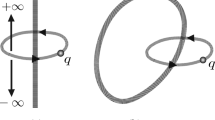Abstract
A novel mechanism of space system based on flux pinning is utilized potentially because flux pinning takes a number of advantages, such as no-mechanical connection and the characteristics of passive stability. In this novel structure, a flux pinned interface is generally composed of a high temperature superconductor and a permanent magnet or an electromagnet mounted on a respective module. In addition, a feasible type of flux pinned docking interface is designed with detailed control strategy. The improved image-dipole model is proposed with intention to calculate the flux pinned axial force between two flux pinned modules, so the axial force can be calculated analytically. In case of zero filed-cooling experiment and field-cooling experiment, the improved version of model is in good agreement with the experimental data measured in our simple experimental device. Furthermore, the potential force and damper model for a flux pinned space system is proposed, so the passive stability of the flux pinned space system is validated in sense of Lyapunov stability.






Similar content being viewed by others
References
Jones, L.: Prospects and challenges of particulate solar sail propulsion. In: AIAA/AAS Astrodynamics Specialist Conference and Exhibit, AIAA 2008-7077 (2008)
Feng, Y., When, J.G., Pradhan, A.K., et al.: Preparation and properties of PMP YBCO bulk with submicrometre Y2BaCuO5 particles. In: Superconducting Science and Technology, vol. 13, pp. 703–708 (2000)
Jones, L., Peck, M.: Stability and control of a flux-pinned docking interface for spacecraft. In: AIAA Guidance, Navigation, and Control Conference (2010). AIAA Paper 2010-8298
Norman, M., Peck, M.: Simplified model of a flux-pinned spacecraft formation. J. Guid. Control Dyn. 33(3), 814–822 (2010)
Ren, Z.Y., Wang, J.S., Wang, S.Y., et al.: Influence of shape and thickness on the levitation force of YBaCuO bulk HTS over a NdFeB guideway. Physica C 384, 159–162 (2003)
Chan, W.C., Wang, C.Y., Lee, J.J.: Grain size effect on magnetic levitation of YBCO superconducting samples. Physica C 282–287, 1455–1456 (1997)
Yang, W.M., Zhou, L., Feng, Y., et al.: Identification of the effect of grain size on levitation force of well-textured YBCO bulk superconductors. Cryogenics 42, 589–592 (2002)
Chiang, C.H., Yang, C.W., Hsieh, P.L., Chan, W.C.: Levitation force at different temperatures for YBCO superconductor. J. Low Temp. Phys. 131, 743–746 (2003)
Jiang, H., Wang, J.S., Wang, S.Y., Ren, Z.Y., Zhu, M., Wang, X.R., Shen, X.M.: The levitation performance of YBaCuO bulk at different temperature. Physica C 378–381, 869–872 (2002)
Brandt, E.H.: Friction in levitated superconductors. Appl. Phys. Lett. 53(16), 1554–1556 (1988)
Hikihara, T., Moon, F.C.: Chaotic levitated motion of a magnet supported by superconductor. Phys. Lett. A 191(3), 279–284 (1994)
Kordyuk, A.A.: Magnetic levitation for hard superconductors. J. Appl. Phys. 83(1), 610 (1998)
Shoer, J.P.: Flux-pinned interfaces for the assembly, manipulation, and reconfiguration of modular space systems. In: AIAA Guidance, Navigation, and Control Conference (2008). AIAA Paper 2008-7233
Acknowledgements
This work is financially supported by the National Natural Science Foundation of China (No. 50975065).
Author information
Authors and Affiliations
Corresponding author
Rights and permissions
About this article
Cite this article
Lu, Y., Zhang, M. & Gao, D. Axial Force and Passive Stability of a Flux Pinned Space System. J Supercond Nov Magn 25, 2323–2329 (2012). https://doi.org/10.1007/s10948-012-1668-0
Received:
Accepted:
Published:
Issue Date:
DOI: https://doi.org/10.1007/s10948-012-1668-0




